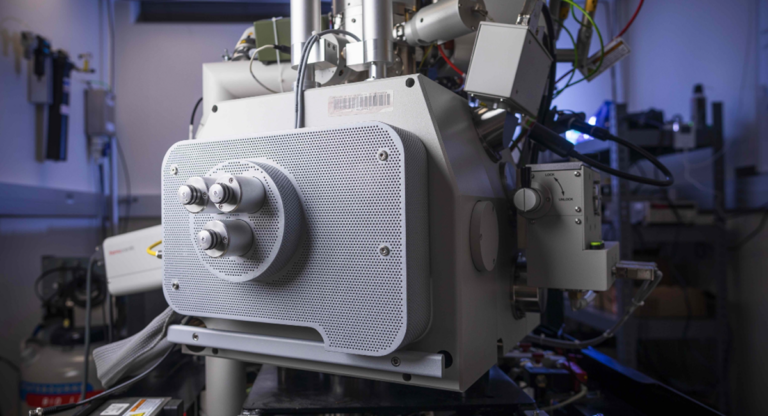A team from the University of California, Santa Barbara used ultrafast electron microscopy to capture photocarriers as they diffuse across a heterojunction of silicon and germanium. It is the first time that the movement, which lasts picoseconds, has been captured as a moving image.
Researchers from the University of California, Santa Barbara have visualized photoexcited charges traveling across the interface of two different semiconductor materials in a solar cell.
In a solar cell, sunlight hits a semiconductor material, causing electrons to move across two different materials, known as the heterojunction, creating a current that is harnessed to power electronic devices. It is clear that this study is the first time that this movement of photo carriers, which lasts picoseconds or trillionths of a second, has been captured as a moving image.
The research article “Imaging hot transfer of photocarriers across a semiconductor heterojunction using ultrafast electron microscopy”, available in the magazine PNASdescribes how the researchers used ultrafast electron microscopy (SUEM), a technique that combines high spatial-temporal resolution and surface sensitivity, to investigate photocarrier dynamics across a heterojunction of silicon and germanium, both common semiconductor materials in solar photovoltaics.
The team used ultrafast laser pulses to act as a picosecond-scale shutter and fired an electron beam to scan the surface of the materials through which the hot photocarriers travel, excited by an optical pump beam. The resulting images allowed the team to assess the photocarriers as they diffused from one semiconductor material to another.
In the research paper, the researchers discuss how the heterojunction drastically alters the diffusivities of hot photocarriers in both silicon and germanium regions due to charge trapping, resulting in reduced carrier mobility. They say this could negatively impact the performance of devices that separate and collect these hot charges.
“When you generate charges in the uniform silicon or germanium regions, the hot carriers move very, very quickly; they initially have a very high speed due to their high temperature,” explains Bolin Liao, associate professor of mechanical engineering and one of the researchers. “But if you generate a charge near the intersection, a fraction of the carriers actually get captured by the intersection potential, causing them to go slower.”
Liao added that although the charge trapping in silicon/germanium heterojunctions can be understood by semiconductor theory, it was still striking to directly observe it experimentally.
“We didn’t expect to be able to image this effect directly,” he said, suggesting that semiconductor device designers might want to address this phenomenon. “This paper is actually about demonstrating the capabilities of SUEM to study realistic devices, for example.”
This content is copyrighted and may not be reused. If you would like to collaborate with us and reuse some of our content, please contact: editors@pv-magazine.com.


